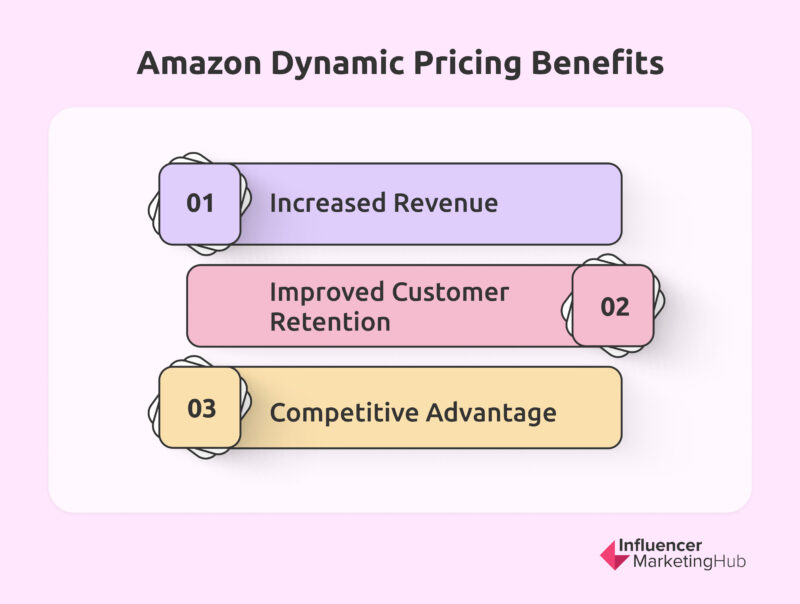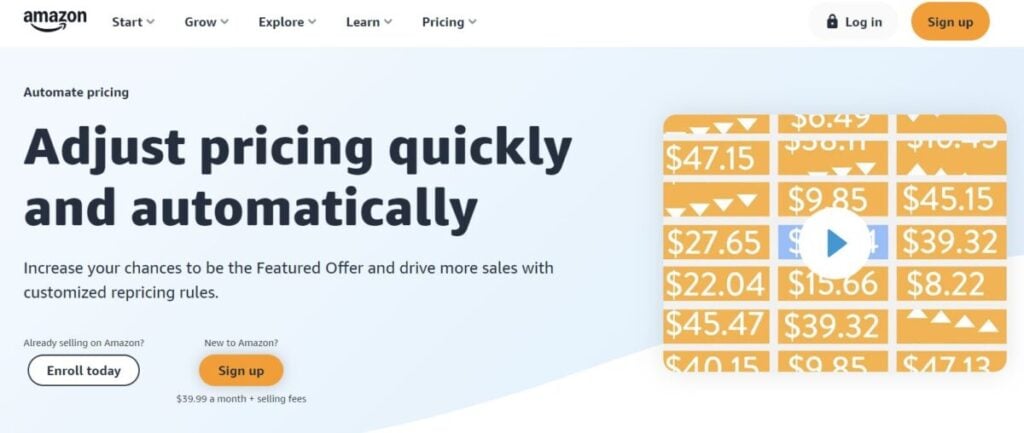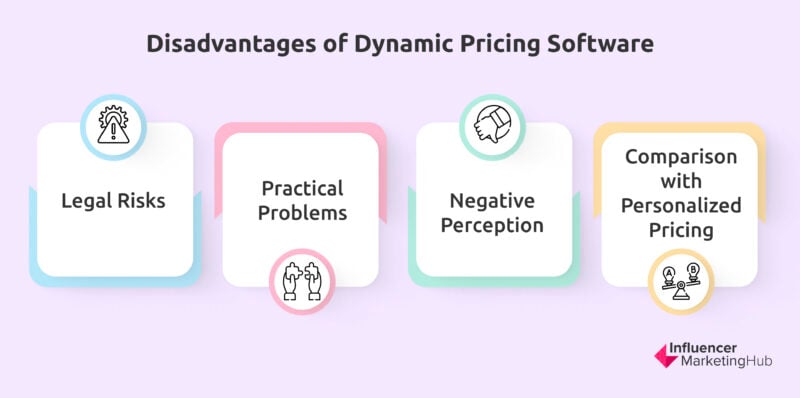Dynamic pricing is no longer a niche strategy limited to the airline and travel industries; it’s on the verge of widespread adoption by all types of retailers. This shift is driven by the increasing demand for better and more seamless shopping experiences. For instance, more than half (55%) of Gen X online shoppers want eCommerce sites to improve their frictionless payment methods. Meeting these expectations requires retailers to be agile, and dynamic pricing is one of the key strategies that can help achieve this.
As Warren Buffet once famously said,
"The single most important decision in evaluating a business is pricing power. If you’ve got the power to raise prices without losing business to a competitor, you’ve got a very good business."
Fortunately, new AI technologies are significantly improving dynamic pricing in 2024, making it easier for retailers to adopt and implement.
In this context, Amazon's dynamic pricing strategy stands out as a prime example of how to use pricing as a competitive advantage. Using sophisticated algorithms, Amazon updates the prices of millions of products multiple times a day, offering the most competitive prices to its shoppers. Join us as we delve into the key components of Amazon's dynamic pricing strategy, its benefits, and how it works.
- What is Dynamic Pricing?
- Key Factors in Amazon’s Dynamic Pricing
- Benefits of Dynamic Pricing on Amazon
- Examples from Different Industries
- Amazon Dynamic Pricing Implementation
- Third-Party Dynamic Pricing Software Tools
- The Reluctance of Retailers to Adopt Dynamic Pricing Software
- Conclusion
- Frequently Asked Questions
What is Dynamic Pricing?
Dynamic pricing is a pricing strategy where the price of a product or service fluctuates based on current market conditions. It is used by retailers to optimize product prices, improve conversion rates, and increase revenue. In Amazon's case, the pricing of millions of products changes multiple times a day, ensuring that they offer the most competitive prices to shoppers.
An intriguing aspect of Amazon's dynamic pricing strategy is the use of "price anchoring" to influence customer behavior. Price anchoring is a clever tactic that involves listing a high-priced item alongside a lower-priced item to make the lower-priced option seem like a better deal.
For instance, if a customer is eyeing a $1,000 laptop, Amazon may showcase a similar laptop for $1,200 next to it, making the $1,000 laptop appear to be a more appealing choice. By using this technique, Amazon can sway customers towards purchasing the lower-priced product while still maintaining a healthy profit margin.
Another interesting aspect of dynamic pricing is that it can lead to price discrimination, where different customers are charged different prices for the same product. This is because retailers can use customer data, such as location, browsing history, and purchase behavior, to tailor prices to individual customers. While this can be a profitable strategy for retailers, it can also lead to concerns about fairness and privacy.
Tip
Use price anchoring in dynamic pricing to make lower-priced options more appealing. Be cautious with price discrimination to avoid customer trust issues related to fairness and privacy.
Key Factors in Amazon’s Dynamic Pricing
Amazon's prowess in dynamic pricing is unparalleled, with the marketplace giant adjusting its product prices a remarkable 2.5 million times each day. It's evident that ignoring the benefits of dynamic pricing is akin to abandoning oneself to the fierce competition of the marketplace. Amazon's dynamic pricing strategy is anchored on cutting-edge technologies such as artificial intelligence (AI), machine learning (ML), and big data analytics. The repricing feature deploys sophisticated algorithms to assess and update the prices of millions of products multiple times daily, taking into account a host of factors such as demand, stock availability, and customer behavior. The algorithms leverage both historical and real-time market data to identify trends and make accurate predictions.
Although Amazon's pricing strategy remains a closely guarded secret, we can infer that the company considers certain parameters when executing its price changes. These parameters consist of global values and user values. Global values refer to factors such as demand volume and stock volume, while user values include product visit frequency and time of purchase. By evaluating both global and user values, Amazon is better positioned to optimize its pricing strategy and offer the most competitive prices.
Global values refer to market behavior
-
Demand & Stock Volume
Amazon leverages global values such as demand volume, adjusting prices based on anticipated market demand for a product. The company considers whether the demand is seasonal, predictable, and what kind of need motivates the customer's purchase. If the stock units are running low and continued demand is expected, Amazon may increase the prices, provided it doesn't limit a consumer segment's purchases.
User values refer to consumer behavior
-
SKU Visit Ratio & Day/Time of Purchase
On the other hand, user values such as SKU visit ratio and day and time of purchase help Amazon evaluate consumer behavior. By tracking user behavior through cookies, Amazon can determine how many times the customer has viewed a particular product, if they viewed it at specific times or if they tend to browse related products together. Amazon uses this data to develop more attractive pricing strategies for potential buyers, boosting sales figures and the average value of each transaction. Similar to the tourism industry, certain products may be purchased more frequently on specific days of the week or times of the day, and Amazon promotes price changes during these moments when customers are more likely to browse, compare and make purchasing decisions.
Benefits of Dynamic Pricing on Amazon
Dynamic pricing has helped Amazon maintain its position as the market leader in online retail. Amazon's dynamic pricing algorithms continuously evaluate, review, and update the prices of millions of its products multiple times a day, ensuring that they offer the most competitive prices to shoppers, ensuring retention and brand loyalty. Dynamic pricing has been a controversial topic among consumers, as some argue that it leads to price instability and uncertainty.
However, for Amazon, the benefits of dynamic pricing have been too significant to ignore. In fact, Amazon updates prices 50 times more in average than Walmart, and while some customers may be annoyed by the frequent price changes, it has allowed Amazon to boost its profits significantly.
Here is a list of key benefits:
1. Increased Revenue
Dynamic pricing enables Amazon to increase its revenue by adjusting prices in real-time based on market demand, stock levels, and user behavior. This results in more sales at optimal prices, which maximizes revenue.
2. Improved Customer Retention
By offering competitive prices, Amazon can improve customer retention and brand loyalty. Shoppers are more likely to return to a retailer that consistently offers fair prices.
3. Competitive Advantage
Dynamic pricing gives Amazon a competitive advantage over other retailers. With the ability to adjust prices multiple times a day, Amazon can stay ahead of the competition and attract more customers.
Examples from Different Industries
Dynamic pricing was first used by airlines and the travel industry, where prices are constantly fluctuating based on supply and demand. However, many other industries have since adopted dynamic pricing strategies, including:
1. E-commerce
Amazon is the prime example of dynamic pricing in e-commerce. Its algorithms continuously evaluate and adjust prices, ensuring that shoppers receive the best deal possible.
2. Entertainment
Streaming services such as Netflix and Spotify use dynamic pricing to offer personalized pricing plans based on user behavior and preferences.
3. Hospitality
Hotels and resorts use dynamic pricing to adjust room rates based on demand and seasonal factors. For example, a hotel may charge more during peak tourist season or for special events.
4. Transportation
Ride-sharing services like Uber and Lyft use surge pricing to adjust fares during high demand periods.
5. Retail
Traditional brick-and-mortar retailers like Walmart and Target are also adopting dynamic pricing to stay competitive in the online space.
Amazon Dynamic Pricing Implementation
At Amazon, the dynamic pricing tool provides two options for automated repricing: the Pre-Defined Automated Pricing Rule and the Create a Customized Pricing Rule.
The Pre-Defined Automated Pricing Rule, also known as the Competitive Price Rule, ensures competitive pricing by matching the Buy Box price for a given ASIN, comparing prices from external sources, and updating prices if other sellers of the same ASIN change their prices.
On the other hand, the Create a Customized Pricing Rule allows sellers to establish their own repricing thresholds based on four fundamental pricing principles: Buy Box, Lowest Price, External Price, and Based on Sales Units. This customization enables sellers to tailor their repricing strategy based on their unique business objectives and competitive landscape.
To create and implement a repricing rule through Amazon Automate Pricing, it's important to follow these technical steps for optimal results:
- Visit the Automate Pricing homepage and click "Get Started" to begin creating a new dynamic pricing rule.
- Select the type of rule that best suits your needs from the drop-down list, taking into consideration your unique business objectives and competitive landscape.
- Name the rule you are creating to help you recall why you assigned a particular SKU to it later on. This will save you time and effort when managing multiple repricing rules.
- Choose the SKUs you intend to enroll and define the corresponding rules for each. You can enroll SKUs one by one or in bulk, and even download a file to enroll all unenrolled SKUs. It's important to set a minimum price to sustain your targeted profit margin. Afterward, click "Proceed to marketplace(s) selection" and select the marketplaces where you want to implement that dynamic pricing. Then, click "Save and Continue" to proceed.
- Choose the primary price action, such as "match", "beat", or "stay above", depending on the repricing principle you have chosen. This will help you tailor your repricing strategy to your unique business goals and help you stay competitive.
- Specify the price margin in percentage or amount by which you want to automate the price. This will ensure that your pricing remains within your desired range while also remaining competitive.
- Apply filters to fine-tune your pricing changes to only relevant offers. For example, you can set your price to be compared only to other FBA offers to help ensure that you remain competitive with similar products.
- Review the Rule Summary to ensure that you have set the rule in accordance with your specific requirements, and then click the "Save this rule" button to make it a part of your repricing strategy. This step is crucial to ensure that your repricing strategy is aligned with your unique business goals and objectives.
To assess the efficacy of your dynamic pricing strategy, keep a close watch on the automated pricing page and examine Seller Central business reports. Analyzing these metrics will enable you to track the impact of the repricing mechanism on your sales and assess its influence on the Featured Offer win percentage. Continuously monitor these parameters to measure the success of your repricing strategy.
Third-Party Dynamic Pricing Software Tools
Amazon sellers rely on third-party software tools that integrate with Amazon as well, to automate and create dynamic pricing because these tools provide more advanced features and functionality compared to Amazon's built-in repricing tool. Third-party software tools offer additional features such as competitor analysis, price history, and Buy Box monitoring, which are not available in Amazon's built-in tool.
Furthermore, third-party repricing tools offer more control over pricing and allow sellers to adjust prices based on a variety of factors such as sales velocity, inventory levels, and competitor prices. This level of customization and control allows sellers to optimize their pricing strategies and maximize profits while still remaining competitive in the Amazon marketplace.
Another benefit of using third-party repricing tools is that they offer better customer support and troubleshooting assistance. While Amazon's support can be slow to respond and often provide limited solutions, many third-party tools offer dedicated support teams and extensive knowledge bases to help sellers address issues and make the most out of the software.
The Reluctance of Retailers to Adopt Dynamic Pricing Software
Retailers may be hesitant to use dynamic pricing software because of concerns about the complexity of implementation, the cost of the software, and the potential negative impact on brand loyalty if prices change too frequently. The list of cons includes amongst others;
1. Legal Risks
Retailers need to consider the legal risks associated with dynamic pricing. Discrimination based on gender, race, and other categories, as well as privacy issues, are major concerns as states tighten their laws around data collection. Retailers that use dynamic pricing algorithms must be careful to ensure that they are not engaging in any discriminatory or unethical practices that violate anti-discrimination laws or breach consumers' privacy.
2. Practical Problems
Dynamic pricing presents practical problems as well. One of the most significant issues is the risk of alienating consumers as prices change regularly. This risk can be especially high during times of high demand when prices may increase, leading to consumer backlash. Issues with returns are also common because dynamic pricing may not take into account factors such as product quality, which could lead to higher return rates.
3. Negative Perception
Dynamic pricing also faces negative consumer perceptions, which can impact brand loyalty. Consumers may feel that they are being manipulated or exploited by retailers using this strategy. They may feel that prices are unfair or arbitrary, leading to a lack of trust in the retailer.
4. Comparison with Personalized Pricing
While personalized pricing has not been widely adopted in retail, the Organisation for Economic Co-operation and Development (OECD) has found that it can improve the lot of customers in aggregate. However, personalized pricing also raises transparency, consumer protection, and antitrust issues. Dynamic pricing presents similar issues, but on a larger scale, as prices change regularly and are often based on real-time data, making it difficult for consumers to understand the pricing logic.
Conclusion
Dynamic pricing has become more sophisticated with the help of advanced technologies like machine learning and big data analytics. This has resulted in improved accuracy and reliability of market data, allowing retailers to make more informed pricing decisions in real-time. The implementation of automated pricing tools has further simplified the process, freeing up retailers to focus on other aspects of their business.
With the increased transparency of dynamic pricing strategies, consumers are more likely to trust retailers and view price changes as fair and reasonable. However, it is important for retailers to be mindful of the potential risks associated with dynamic pricing, including legal issues and negative consumer perceptions.
Despite these challenges, dynamic pricing has proven to be an effective strategy for retailers looking to boost profits and remain competitive in the marketplace. As technology continues to improve, we can expect dynamic pricing to become even more accurate and reliable, making it an even more attractive option for retailers.
Frequently Asked Questions
What is Amazon's dynamic pricing strategy?
Amazon's dynamic pricing strategy involves using sophisticated algorithms to update the prices of millions of products multiple times a day based on various factors such as demand, stock availability, and customer behavior.
How does Amazon use dynamic pricing to compete with other retailers?
By offering competitive prices through dynamic pricing, Amazon can stay ahead of the competition and attract more customers. Its algorithms continuously evaluate, review, and update the prices of its products, ensuring that they offer the most competitive prices to shoppers, which helps in improving customer retention and brand loyalty.
How does Amazon use data to tailor prices to individual customers?
Amazon uses customer data, such as location, browsing history, and purchase behavior, to tailor prices to individual customers. This can lead to price discrimination, where different customers are charged different prices for the same product.
How does Amazon address concerns about fairness and privacy in its dynamic pricing strategy?
Amazon has become more transparent about its dynamic pricing strategies in recent years, providing clear explanations for price changes and being upfront about the data used to make pricing decisions. This can help to build trust with consumers and mitigate concerns about unfair or discriminatory practices.
What are the benefits of Amazon's dynamic pricing strategy?
Amazon's dynamic pricing strategy has helped the company maintain its position as the market leader in online retail. It has enabled Amazon to increase its revenue by adjusting prices in real-time based on market demand, stock levels, and user behavior. It has also improved customer retention and brand loyalty by offering competitive prices.
Are there any risks or challenges associated with Amazon's dynamic pricing strategy?
Yes, there are some risks and challenges associated with Amazon's dynamic pricing strategy. It can lead to concerns about fairness and privacy, as well as practical problems such as issues with returns and negative consumer perceptions. Retailers must also be mindful of the legal risks associated with dynamic pricing, such as discrimination and privacy issues.





